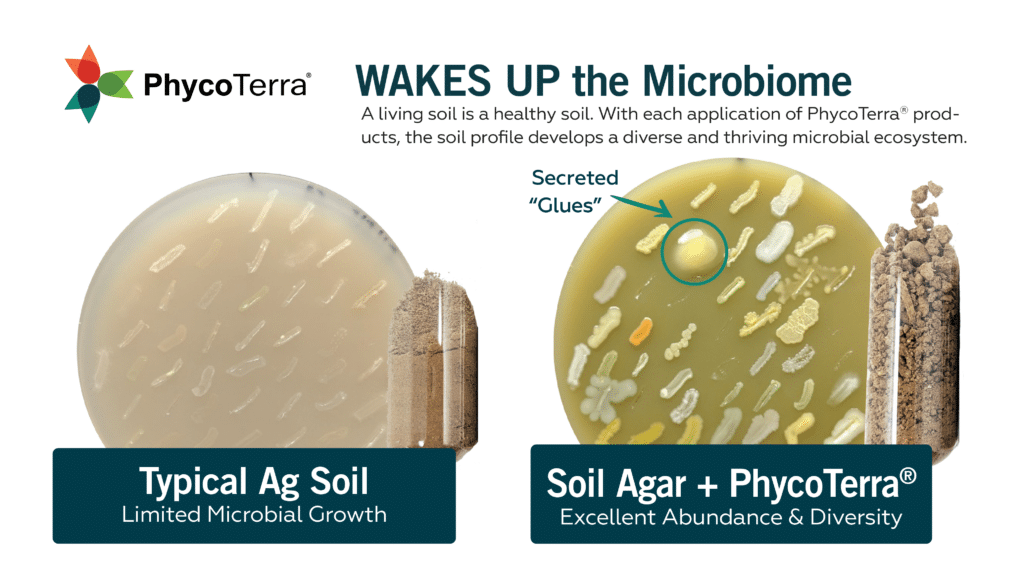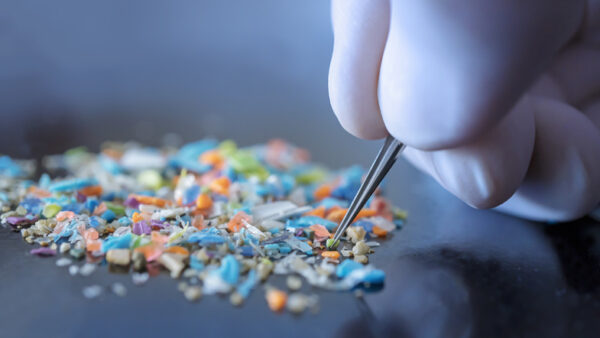Soil is one of the most important resources for growing crops. Your soil contains a host of beneficial microbes , a community of microorganisms. These beneficial microbes are an integral part of your farm’s ecosystem. They impact soil health, plant health, and farm return on investment.
Here are some ways soil microbes improve your soil and, in turn, impact plant health for higher yield potential.
Improves nutrient uptake. Microbes play a key role in increasing nutrient availability needed for plant growth. For example, some bacteria can fix nitrogen, making it plant-available for crop uptake. Mycorrhizal fungi form a symbiotic relationship with plant roots. The fungi provide the plant with nutrients such as phosphorus and nitrogen in exchange for carbohydrates produced by the plant.
Improves soil structure. Beneficial microbes create “glues” and “nets” below the ground that are key in creating a great soil structure. Fungi create a network of nets underground through extensions called hyphae. Bacteria secrete glue-like substances called extracellular polysaccharides, allowing soil particles to bind together. These glues and nets create soil aggregates and promote soil structure which gives the soil optimal water-holding capacity, increases aeration, and improves crop productivity.
Improves water-holding capacity and infiltration. The glues and nets improve water-holding capacity and water infiltration. By improving your soil’s water management, you can also improve your crop drought tolerance. Fields that lose precipitation and irrigation water via runoff or evaporation can’t expect to provide crops with the moisture retention they need.
Improves disease resistance. To attack crops, soil-borne diseases need a conducive environment, a susceptible host, and a virulent pathogen. Beneficial microbes create an unconducive environment for pathogens and produce compounds to help protect plants from disease and pests, creating disease-suppressive soils (DSS).
Improves fertilizer results. Just because you’ve added synthetic or organic fertilizer doesn’t mean your crops are able to access the nutrients. Improving soil biology and optimizing soil health can positively influence fertilizer use efficiency (more yield per unit of fertilizer applied). Different members of the soil microbiome can contribute directly to plant nutrient availability. Some microbes aid in the release of tied-up compost or manure-based nutrients. Some microbes have the ability to make more nitrogen available from the air or have chemical machinery to make phosphorus or potassium more plant-available.
Improves your crop residue breakdown, without tillage. Turn last year’s crop residue into nutrients for next year’s crops by using soil microbes to break down residue. Crop residue decomposition is largely controlled by biological processes influenced by environmental and soil conditions. Crop residue is composed of cellulose, lignin, hemicellulose, and nutrients. Microbes are key in the decomposition process, as microbes release enzymes and exudates to break down these components. This regenerative agriculture practice can provide nutrients back to the soil, a generous return on investment, and can also help you avoid soil compaction.
You can support your microbiome by adopting soil health management practices like reducing tillage, adding cover crops, maximizing the period of living root growth, maximizing plant diversity, and feeding your soil microbes a carbon product. Start with a soil test to determine your soil’s diversity and abundance of microbes.
75% of beneficial microbes in farm soils are dormant due to starvation. A liquid microalgae food is the easiest way to wake them up and get them started to improve your soil health and crop health.
By supporting the soil microbiome, you can promote healthy and productive soils, leading to higher crop yield potentials and better quality produce.









